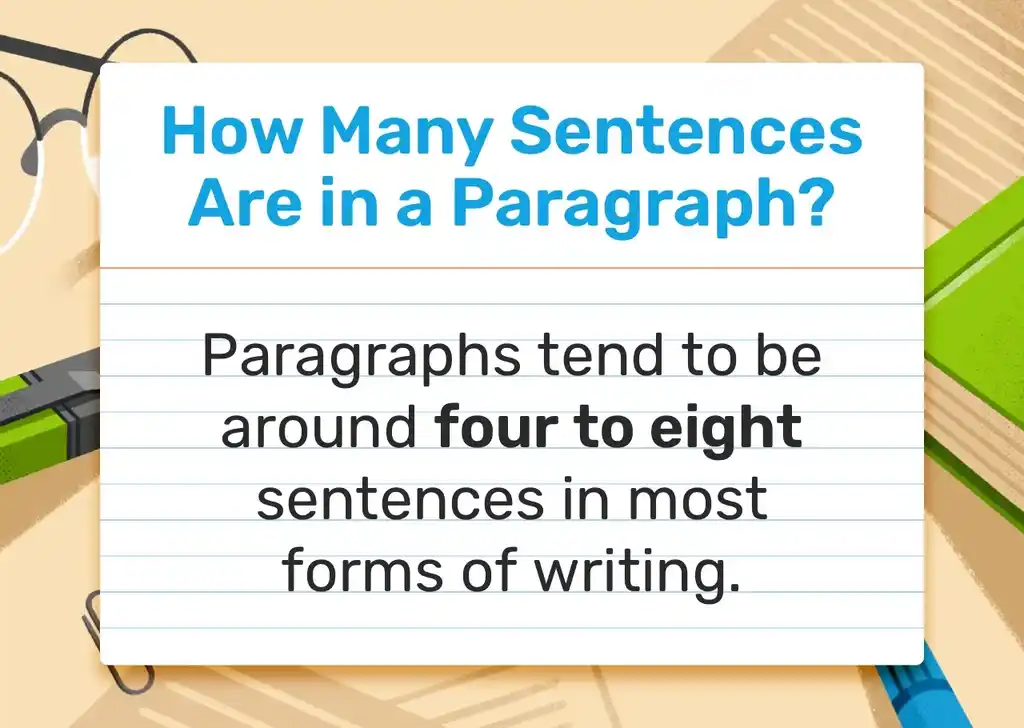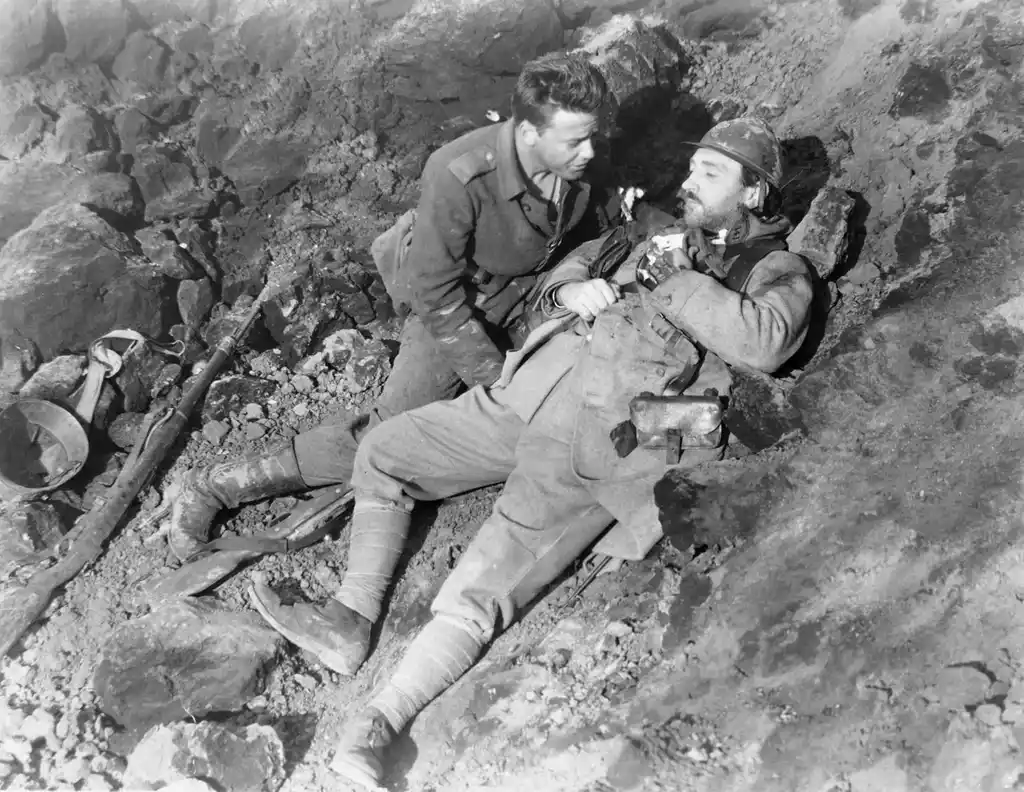Posted on Mar 13, 2024
How Many Sentences Are in a Paragraph?
In most forms of writing, paragraphs tend to be around four to eight sentences long. This general range will vary depending on the type of writing in question and the effect the writer is aiming to achieve.
In this guide, we’ll look at the length of paragraphs in various types of writing and see what determines whether they should be 20 sentences long, or stand alone as single sentences.
🖋️
Which writing app is right for you?
Find out here! Takes 30 seconds
A paragraph should be as long as it needs to be
Reedsy editor Rebecca Heyman says a paragraph generally begins when a new idea is introduced. “A single sentence can stand on its own as a paragraph if its treatment of a specific theme or motif is complete. Conversely, denser, more complex topics may require a substantial number of sentences to adequately unpack meaning.” For example, in this very paragraph that you’re reading right now, we’re dealing with a fairly abstract concept which requires multiple sentences for clarification. In other words, a paragraph should be as long as it needs to be in order to convey its point.

Let’s now examine this idea from different perspectives, and look at how writers use paragraph breaks for different purposes.
In nonfiction, paragraphs tend to be longer
In nonfiction writing, where the purpose is often to explain new concepts and ideas, paragraphs tend to be a bit on the longer side. They will often introduce an idea, explore it, and then draw conclusions based on that exploration.
In this paragraph from Stefano Mancuso’s The Revolutionary Genius of Plants, he introduces, explores, and concludes upon the intelligence of plants:
Even though they have nothing akin to a central brain, plants exhibit unmistakable attributes of intelligence. They are able to perceive their surroundings with a greater sensitivity than animals do. They actively compete for the limited resources in the soil and atmosphere; they evaluate their circumstances with precision; they perform sophisticated cost-benefit analyses; and, finally, they define and then take appropriate adaptive actions in response to environmental stimuli. Plants embody a model that is much more durable and innovative than that of animals; they are the living representation of how stability and flexibility can be combined. Their modular, diffused construction is the epitome of modernity: a cooperative, shared structure without any command centers, able to flawlessly resist repeated catastrophic events without losing functionality and adapt very quickly to huge environmental changes.
The idea is established simply in the first sentence: “plants exhibit unmistakable attributes of intelligence”. Mancuso then elaborates on this idea by discussing their perceptual and analytical properties, before concluding that plants' intelligence is an example of innovative and durable adaptability to the environment.
You’ll see a similar pattern across nonfiction and other types of expository writing, whether you’re reading books on military history, self-help guides, or gardening manuals. Where the intention of the work is to inform or educate the reader, this tried-and-true way of structuring paragraphs allows information to be passed on in manageable chunks.
However, when you’re writing with the intention of telling a story in an enjoyable fashion, paragraph breaks tend to happen more often, and for different reasons.

Perfect your self-help manuscript
Work with a professional to take your book to the next level.
In fiction, they can be as short as a sentence
With artistic works of writing, where the focus is on storytelling providing the reader with a satisfying narrative experience, you will often see the greatest range of paragraph length within a single work. A novelist might have three pages of unbroken narrative, punctuated by a one-word paragraph.
In general, fiction writers will start a new paragraph whenever something new happens. For example:
Whenever dialogue or action switches between characters
In this extract from Gillian Flynn’s Gone Girl, the narrator, Nick, is being spoken to by his sister.
‘We were lost in the rain,’ she said in a voice that was pleading on the way to peeved.
I finished the shrug.
McMann’s, Nick. Remember, when we got lost in the rain in Chinatown[...]’
The first paragraph is a quick line of dialogue with a tag that indicates who is speaking. Nick then reacts with an action beat (his shrug) — which is in its own paragraph. Then there is another paragraph break to indicate that the next line is spoken once again by his sister.
In this context, paragraph breaks show the reader that we’re switching characters, allowing an author to avoid having to start every other sentence with “Margo said” or “I said”.

FREE COURSE
How to Write Believable Dialogue
Master the art of dialogue in 10 five-minute lessons.
When the narration changes between action and reflection
In a narrative, paragraph transitions can also be a way to indicate that the narrator is changing their perspective — often from describing the action of a scene, to remarking on a character’s thoughts or inner reactions.
In this passage from All Quiet on the Western Front, Erich Maria Remarque uses short paragraphs — sometimes single sentences — to paint an impressionistic vignette of a man’s death in the trenches.
But every gasp strips my heart bare. The dying man is the master of these hours, he has an invisible dagger to stab me with: the dagger of time and my own thoughts.
I would give a lot for him to live. It is hard to lie here and have to watch and listen to him.
By three in the afternoon he is dead.
I breathe again. But only for a short time. Soon the silence seems harder for me to bear than the groans. I would even like to hear the gurgling again; in fits and starts, hoarse, sometimes a soft whistling noise and then hoarse and loud again.

Remarque utilizes paragraph transitions to depict the shift in Paul’s (the main character) focus, moving from the immediate sensory details of the scene to his internal reflections and emotional turmoil. Paul’s desire for the dying man to live, juxtaposed with the harsh reality of death in wartime, highlights the juxtaposition between his internal empathy and the tragic experience of war.
Whenever there’s a time jump
Time jumps are often a good place to start a new paragraph to make it visually clear that some amount of time has passed. In this passage from Oliver Twist, Dickens starts a new paragraph to indicate time jumps.
They were sad rags, to tell the truth; and Oliver had never had a new suit before.
One evening, about a week after the affair of the picture, as he was sitting talking to Mrs. Bedwin, there came a message down from Mr. Brownlow, that if Oliver Twist felt pretty well, he should like to see him in his study, and talk to him a little while.
Without a paragraph change, it would feel odd that the narrator is suddenly taking us forward by a week right in the middle of telling us about Oliver’s clothes. Instead, the paragraph break indicates that one part of the story is over and that the next part is about to begin.

GET ACCOUNTABILITY
Meet writing coaches on Reedsy
Industry insiders can help you hone your craft, finish your draft, and get published.
Paragraphs' length affects the pace of the writing
Paragraph length (along with sentence length) has a profound effect on the pace of one’s writing. A page or two of block paragraphs will take readers far longer to get through than several shorter paragraphs and often reflects whether something is occurring quickly or slowly within the narrative.
For example, in The Great Gatsby, Fitzgerald takes his time to describe a road that will play a significant role in the story.
‘About half way between West Egg and New York the motor-road hastily joins the railroad and runs beside it for a quarter of a mile, so as to shrink away from a certain desolate area of land. This is a valley of ashes—a fantastic farm where ashes grow like wheat into ridges and hills and grotesque gardens where ashes take the forms of houses and chimneys and rising smoke and finally, with a transcendent effort, of men who move dimly and already crumbling through the powdery air. Occasionally a line of gray cars crawls along an invisible track, gives out a ghastly creak and comes to rest, and immediately the ash-gray men swarm up with leaden spades and stir up an impenetrable cloud which screens their obscure operations from your sight.’
This longer style paragraph is used to great effect in representing this pastoral stretch of land between the party hubs of West Egg and New York City. Think of this long paragraph as the wide establishing shot in a movie, everything looks a bit slower from that perspective!
Equally, when Fitzgerald wants to pick up the pace, he uses shorter paragraphs, as seen in the following example:
‘What do you want money for, all of a sudden?’
‘I’ve been here too long. I want to get away. My wife and I want to go west.’
‘Your wife does!’ exclaimed Tom, startled.
‘She’s been talking about it for ten years.’ He rested for a moment against the pump, shading his eyes. ‘And now she’s going whether she wants to or not. I’m going to get her away.’
The coupé flashed by us with a flurry of dust and the flash of a waving hand.
‘What do I owe you?’ demanded Tom harshly.
‘I just got wised up to something funny the last two days,’ remarked Wilson. ‘That’s why I want to get away. That’s why I been bothering you about the car.’
‘What do I owe you?’
‘Dollar twenty.’

Tom realizes both his mistress and wife are slipping from his grasp (image: Warner Bros)
During this part of the novel, Tom Buchanan (the antagonist) is feeling cornered as both his wife and mistress are slipping away from him. The short paragraphs in quick succession show his irritability, giving readers an insight into how unsettled he is. Even the coupé driven by Gatsby flashes by him, the speed of which is also heightened by use of short paragraphs.
Shorter paragraphs introduce more white space on the page, which accelerates the pace of reading. This can be used powerfully, as in the examples above, to match the narrative when fast, uncontrollable, or sudden events happen or to give readers a wide, slow, or sluggish feeling.
Many paragraphs later, we hope you found this helpful. If you’ve struggled with how to determine your paragraph lengths, know that it’s something that many writers find challenging! By roughly following the advice in this post you’ll be able to powerfully use varying paragraph lengths to hook readers throughout your work.







